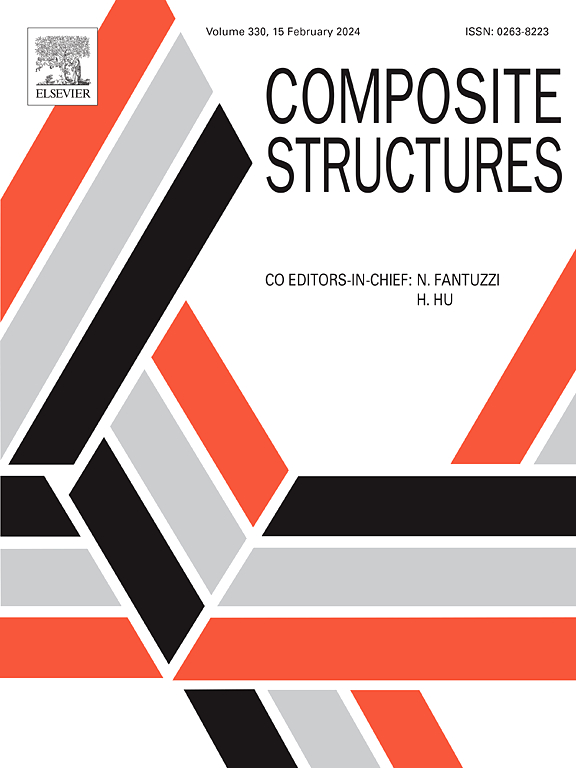Fabrication and electro-thermal performances of glass fiber/carbon nanotube film composites
IF 6.3
2区 材料科学
Q1 MATERIALS SCIENCE, COMPOSITES
引用次数: 0
Abstract
This study explores the electrothermal properties of a new glass fiber reinforced polymer (GFRP) composite with embedded carbon nanotube (CNT) film, aimed at enhancing anti-icing and de-icing efficiencies in marine and aerospace applications. Produced using the floating catalyst chemical vapor deposition (FCCVD) method, the CNT film was integrated within glass fiber/phenolic resin layers. Evaluations included microstructure characterization, thermal analysis, and mechanical testing, which confirmed the composite’s integrity and performance. The tests demonstrated the CNT film’s efficient Joule heating capabilities under various electrical loads, achieving rapid heating to operational temperatures. Additionally, the GFRP/CNT film composite displayed superior mechanical properties and effective de-icing potential, suggesting broader applications in industries needing robust, lightweight, and thermally controllable materials. This advancement significantly enhances the structural and functional capacities of materials used in marine vessels and aerospace.
求助全文
约1分钟内获得全文
求助全文
来源期刊

Composite Structures
工程技术-材料科学:复合
CiteScore
12.00
自引率
12.70%
发文量
1246
审稿时长
78 days
期刊介绍:
The past few decades have seen outstanding advances in the use of composite materials in structural applications. There can be little doubt that, within engineering circles, composites have revolutionised traditional design concepts and made possible an unparalleled range of new and exciting possibilities as viable materials for construction. Composite Structures, an International Journal, disseminates knowledge between users, manufacturers, designers and researchers involved in structures or structural components manufactured using composite materials.
The journal publishes papers which contribute to knowledge in the use of composite materials in engineering structures. Papers deal with design, research and development studies, experimental investigations, theoretical analysis and fabrication techniques relevant to the application of composites in load-bearing components for assemblies, ranging from individual components such as plates and shells to complete composite structures.
 求助内容:
求助内容: 应助结果提醒方式:
应助结果提醒方式:


